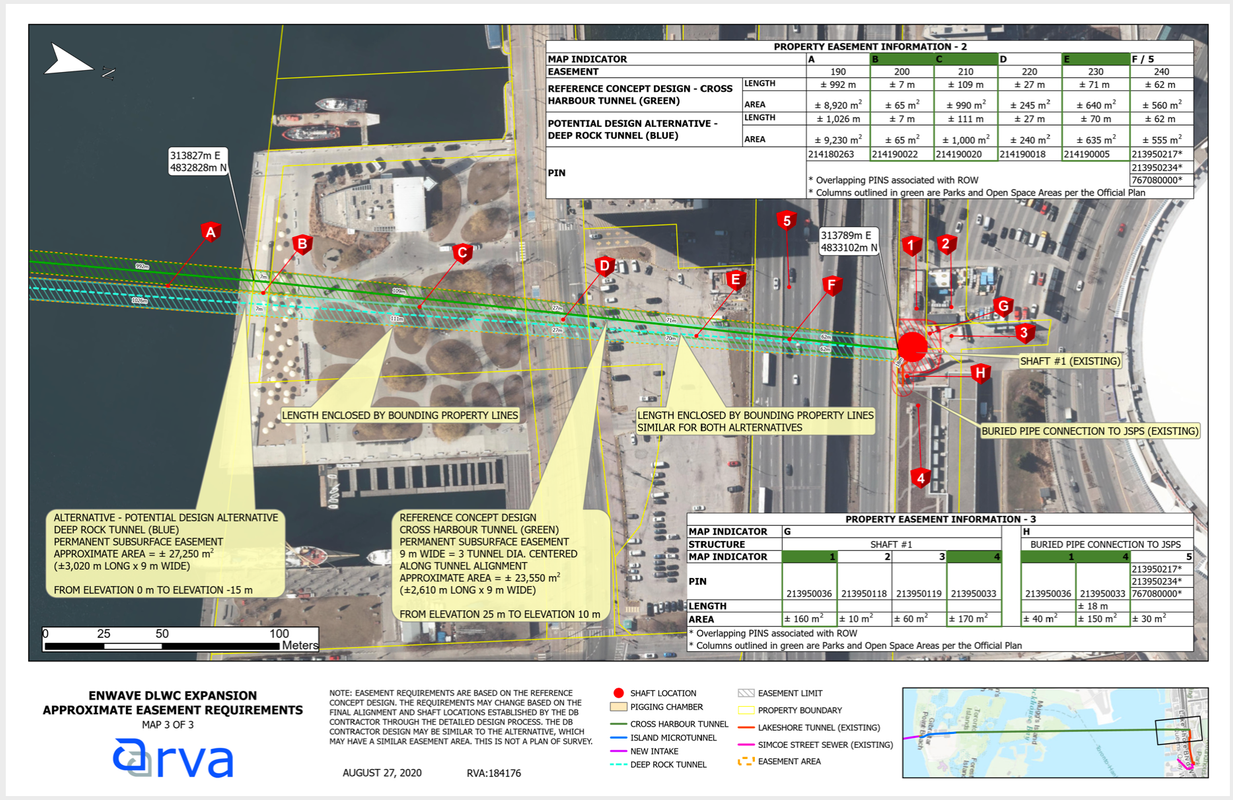The expansion of the DLWC supply would necessitate the extraction of an increased volume of raw water from Lake Ontario. To supply this volume of water, an additional intake pipe is required at the Island WTP. This intake structure will be located approximately 70-80 metres below the surface of Lake Ontario, and will extend 3- kilometres into the Lake.
This intake pipe will terminate on the south shore, with the construction of a new pipeline-cleaning chamber, connection to a new drop-shaft Shaft #3, and connection to the existing Island WTP intake pipes. which will be upgraded to facilitate the connection of the existing and proposed components of DLWC system. Shaft #3 is generally located on the south side of Lakeshore Avenue, and will house process equipment (i.e. valves, flowmeters, screens, etc.). DLWC water will bypass the Island WTP and be conveyed via a new tunnel from Shaft #3 to Shaft #1, which is located near the John Street Pumping Station. Depending on the Design Build Contractor’s preferred construction method, this tunnel will either be:
a) a deep rock tunnel from Shaft #3 to Shaft #1, or
b) a shallower microtunnel from Shaft #1 to an intermediate Shaft #2 located on the south side of Service Road (to the north of proposed Shaft #3 and the Island WTP). At Shaft #2, the tunnel would change to an approximately 2.6 km long deep rock tunnel to continue on to Shaft #1.
At Shaft #1, the DLWC raw water will be used to extract heat from the existing district cooling loops, the warm water will flow to Enwave’s Simcoe Street Cooling Plant for addition heat extraction, and will then be discharged bake into Lake Ontario.
As part of this expansion process, the following City-owned parks will be impacted: HTO, Southern Linear Park and future Rees Park as well as the parks on the Toronto Island, specifically those around the Island WTP where Shaft #3 is located and where the tunnel will pass under. The portions of the parks impacted by the expansion are illustrated in Attachment A.
The two possible alternative tunnel alignments being considered are generally located in the same area and would require easement over the same parks.







